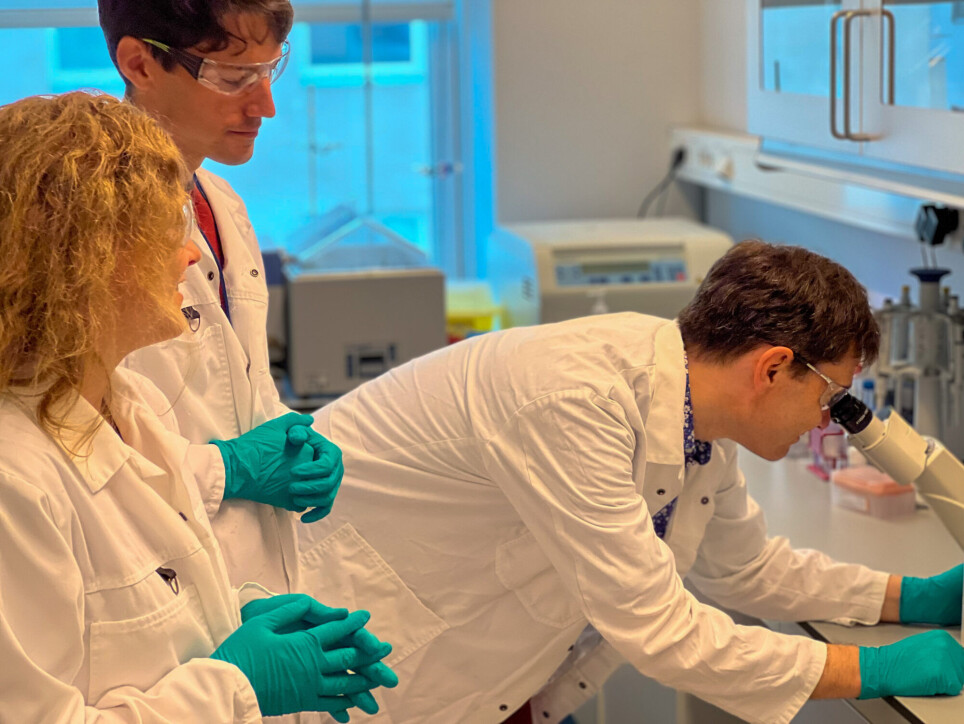THIS ARTICLE/PRESS RELEASE IS PAID FOR AND PRESENTED BY SINTEF - read more

Research into disease prevention instead uncovers a method of repairing DNA
Researchers have discovered a new method of activating enzymes that may make it possible to repair proteins that have been damaged as a result of hereditary diseases, such as some types of skin cancer.
A standard approach to treating disease is to prevent biological functions from damaging the body’s tissues. This is normally done by introducing molecules that bond with harmful proteins.
This approach was being investigated by an international team of researchers aiming to use an enzyme to prevent the development of infectious disease. However, instead of blocking the infection, the researchers discovered that the enzyme they were studying was very active. So, it was given a new function – and the cell began to adopt a new way of maintaining its DNA.
Published in Science
“In simple terms, we tried to disable a lock by putting chewing gum in it, only to find that instead of jamming the lock, the door opened wide”, says SINTEF researcher Torkild Visnes, who works in the fields of biotechnology and nanomedicine, and is part of the team of researchers.
The team’s discovery has now been published in the research periodical Science. The article describes how the researchers first discovered, and then developed and characterised, the effect of a new organic molecule that can activate a new function in a targeted protein. The protein acts to maintain DNA in human cells.
Great potential
“We now have the knowledge and methods needed to search for and design other molecules that have similar effects on other proteins of interest”, says Visnes . “This may offer us new opportunities to modify enzymatic processes. In practice, this means that we can introduce new chemical and biological functions into cells and do so in a variety of different contexts. What is especially exciting is that we may be able to introduce chemical reactions that would otherwise not occur naturally."
This work is the result of an international collaboration with partners in Sweden, Spain, Germany and the UK. Work in Norway has been carried out by SINTEF Industry and SINTEF Ocean. The researchers are currently working to develop new applications of their discovery.
“We will now be using our new knowledge to activate other enzymes”, says Visnes. “This may involve proteins and may have impacts on key medical issues such as hereditary diseases. For example, we can envisage reactivating damaged proteins that have mutated and resulted in hereditary diseases. There are also major industrial applications. We may be able to activate key industrial proteins and enzymes and give them new functions, enabling them to become more effective and carry out tasks that are currently not possible."
Researchers from the SINTEF research team are among the co-authors of the scientific article. Torkild Visnes, Antonio Sarno, Simon Loevenich and Hanne Haslene-Hox have contributed by measuring how human cells repair oxidised DNA in the presence both of the recently developed molecule and known inhibitors (drugs that are used to suppress infection and pain). This has been a key experiment, designed to characterise and understand how the new molecule impacts on cells.
Reference:
Michel et al. 'Small-molecule activation of OGG1 increases oxidative DNA damage repair by gaining a new function', Science, vol. 376, 2022. DOI: 10.1126/science.abf8980 Abstract.
See more content from SINTEF:
-
Fresh hope for patients with chronic inflammatory bowel disease
-
Testing a giant ship: May take five kilometres to stop
-
A robot is helping researchers hunt for the best cancer warriors
-
Locomotives that run on diesel can be electrified
-
Where kelp is being turned into lab-grown meat
-
Immediate action is a key factor for successful restoration of marine habitats





































